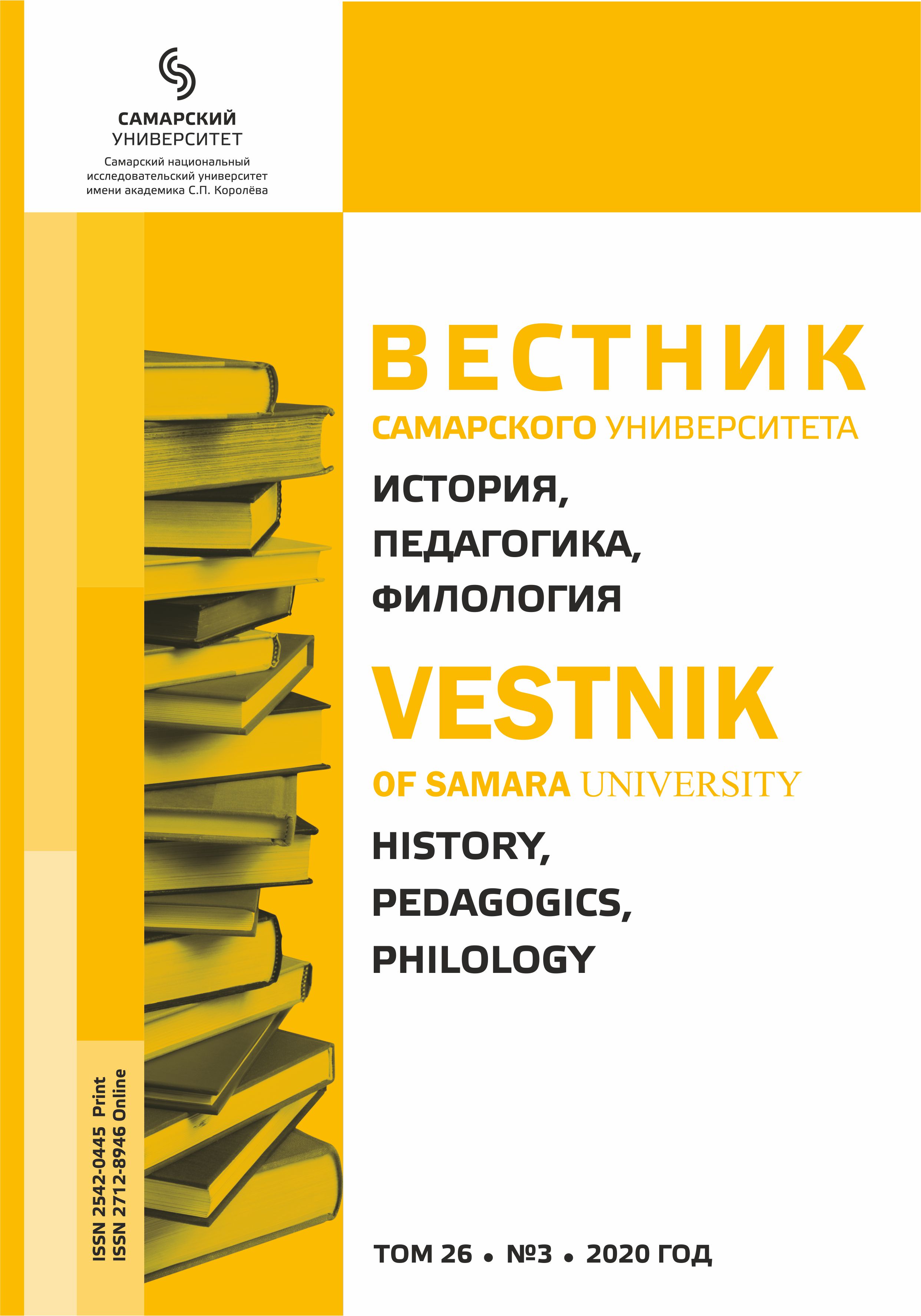Regional lexicography: zoological vocabulary in ideographic dictionary
- Authors: Bazhenova T.E.1
-
Affiliations:
- Samara State University of Social Sciences and Education, Samara, Russian Federation
- Issue: Vol 26, No 3 (2020)
- Pages: 61-66
- Section: Articles
- URL: https://journals.ssau.ru/hpp/article/view/8186
- DOI: https://doi.org/10.18287/2542-0445-2020-26-3-61-66
- ID: 8186
Cite item
Full Text
Abstract
In the article the working results on one section of the thematic dictionary of Samara dialects are summarized. The study is novel in the application of the ideographic description technique to the large lexical material, which was extracted from the unpublished files of dialectological expeditions in the villages of the Samara region. The author of the article reported that the language corps of vocabulary fixations was used as the main source of the thematic group of zoological vocabulary, which was compiled using the thematic questionnaire, given to respondents. The thematic zoological vocabulary was classified and divided into two main semantic blocks: «Wild Animals» and «Home Animals.»The author states that both semantic blocks represent complex system formations with developed differentiation of dialect nominations. Attention is drawn to the fact that the first block is dominated by the names of fish, birds, insects, and reptiles, while the most part of the second block consists of the animal’s and bird’s names grown in the household. In the Samara dialects there is a variety of word-formation dialect modifications of words, the presence of productive affixes. The author raises the question, if it is possible to represent systematically the names of individual members of the animal world, which were borrowed by Russians from the other languages of the Volga region people, in the dialect dictionary. The author claims that the material of the Samara dialects is optimally reflected in the dictionary compiled using the technique of ideographic description. The article concludes that the systemic connections identified as a result of the study in the thematic group of zoological names can be used in the complex characteristic of secondary dialects of the Volga region, along with the facts of other dialect language’s levels.
About the authors
T. E. Bazhenova
Samara State University of Social Sciences and Education, Samara, Russian Federation
Author for correspondence.
Email: morenov@ssau.ru
ORCID iD: 0000-0002-4151-0686
Candidate of Philological Sciences, associate professor of the Department of the Russian Language, Culture of Speech and their Teaching Methodology; Philological Faculty, Samara State University of Social Sciences and Education
References
- Bartmiński 1988 – Bartmiński J. (1988) Słownik Ludowych stereotypów językowych. Załoženia ogólne. Etnolingwistika, no. 1, pp. 16–34. (In Polish.)
- Zaręba 1965 – Zaręba A. (1965) W sprawie Słownika gwar polskich. Język polski, 1965, XLV, Z. 5, pp. 279–293. (In Polish.)
- Bazhenova 2017 – Bazhenova T.E. (2017) Vocabulary of Samara dialects: typological and lexicographical description: monograph. Samara: SGSPU, 190 p. (In Russ.)
- Bazhenova, Bazhenov 2015 – Bazhenova T.E., Bazhenov N.Yu. (2015) Lizard names in Russian dialects. In: Lexical atlas of Russian folk dialects (Materials and research) 2015. Saint Petersburg: Nestor-Istoriia, pp. 20–31. Available at: https://iling.spb.ru/periodicals/larng/2015/book.pdf. (In Russ.)
- Barabina 1998 – Barabina M.N. (1998) Experience of compiling a regional dialect dictionary. In: Lexical atlas of Russian folk dialects (Materials and research) 1995. Saint Petersburg: Nauka, pp. 230–237. (In Russ.)
- Barannikova 2000 – Barannikova L.I. (2000) Atlas of the dialects of the Middle and Lower Volga region. Saratov: Saratov. gos. un-t, 104 p. (In Russ.)
- Gubareva 2002 – Gubareva V.V. (2002) Dictionary of Tambov dialects (nutrition vocabulary). Tambov: TGU, 278 p. (In Russ.)
- Zakrevskaya 1974 – Zakrevskaya Ya.V. (1974) Slavic names of the woodpecker. In: Meeting on the All-Slavic Linguistic Atlas (Voronezh, September 11–16, 1974): theses. Voronezh, pp. 196–200. (In Russ.)
- Zanozina, Larina 2007 – Zanozina L.O., Larina L.I. (2007) Name of the amphibians (frog, toad) in Kursk dialects. In: Lexical atlas of Russian folk dialects (Materials and research) 2007, vol. 1. Saint Petersburg: Nauka, pp. 244–247. (In Russ.)
- Zvereva, Rusinova and Chernykh 2019 – Zvereva Yu.V., Rusinova I.I. and Chernykh A.V. (2019) Traditional costume of the peoples of the Perm region. Russian. Thematic lexicon of clothing. Saint Petersburg: Mamatov, 432 p. (In Russ.)
- Krasovskaya 2015 – Krasovskaya N.A. (2015) Features of the names of the woodpecker in Russian dialects. In: Lexical atlas of Russian folk dialects (Materials and research) 2015. Saint Petersburg: Nestor-Istoriia, pp. 323–332. Available at: https://iling.spb.ru/periodicals/larng/2015/book.pdf. (In Russ.)
- Mochalova 2010 – Mochalova T.I. (2010) Names of domestic animals in Russian dialects of the Republic of Mordovia. In: Lexical atlas of Russian folk dialects (Materials and research) 2010. Saint Petersburg: Nauka, pp. 397–403. (In Russ.)
- Myznikova 2016 – Myznikova Yа.V. (2016) Features of the vocabulary of livestock and poultry farming in the Ulyanovsk region. In: Lexical atlas of Russian folk dialects (Materials and research) 2016. Saint Petersburg: Nestor-Istoriia, pp. 384–390. Available at: https://elibrary.ru/item.asp?id=28386329. (In Russ.)
- Popov 2007 – Popov A.A. (2007) Insect names in North Russian dialects (based on the materials of the SRDK). In: Lexical atlas of Russian folk dialects (Materials and research) 2007. Vol. 1. Saint Petersburg: Nauka, pp. 191–197. (In Russ.)
Supplementary files













